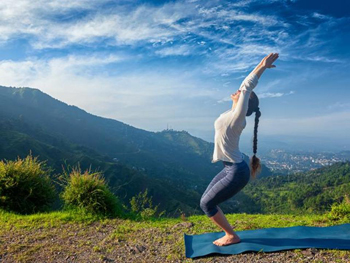New Delhi, Jul 4: Meditation is an activity practiced by millions of people worldwide. But how does it affect your brain? In recent years, there has been a sharp increase in international research on meditation and the findings may not be what you expect. Although the options are many, the purpose is basically the same: more peace, less stress, better concentration, greater self-awareness and better processing of thoughts and feelings.
A research team at the Norwegian University of Science and Technology (NTNU), the University of Oslo and the University of Sydney have worked to determine how the brain works during different types of meditation. Meditation techniques can be divided into two main groups. One type is concentrative meditation, where you focus attention on your breathing or on specific thoughts, and in doing so, suppresses other thoughts.
The other type can be called nondirective meditation, where you effortlessly focus on your breathing or on a meditation sound, but beyond that the mind is allowed to wander as it pleases. Although according to the team, the research still reveals very little about which technique is the best, or better, it still provides food for thought about the increasingly popular concept of meditation.
Fourteen people, who had extensive experience with the Norwegian technique Acem meditation, were tested in an MRI machine. In addition to simple resting, they undertook two different mental meditation activities, nondirective meditation and a more concentrative meditation task.
Nondirective meditation led to higher activity than during rest in the part of the brain dedicated to processing self-related thoughts and feelings. When test subjects performed concentrative meditation, the activity in this part of the brain was almost the same as when they were just resting.
“I was surprised that the activity of the brain was greatest when the person’s thoughts wandered freely on their own, rather than when the brain worked to be more strongly focused,” said Jian Xu, who is a physician at St. Olavs Hospital and a researcher at the Department of Circulation and Medical Imaging at NTNU.
Adding, “When the subjects stopped doing a specific task and were not really doing anything special, there was an increase in activity in the area of the brain where we process thoughts and feelings. It is described as a kind of resting network. And it was this area that was most active during nondirective meditation.”
“The study indicates that nondirective meditation allows for more room to process memories and emotions than during concentrated meditation,” says Svend Davanger, a neuroscientist at the University of Oslo, and co-author of the study.
“This area of the brain has its highest activity when we rest. It represents a kind of basic operating system, a resting network that takes over when external tasks do not require our attention. It is remarkable that a mental task like nondirective meditation results in even higher activity in this network than regular rest,” added Davanger.





Comments
Add new comment